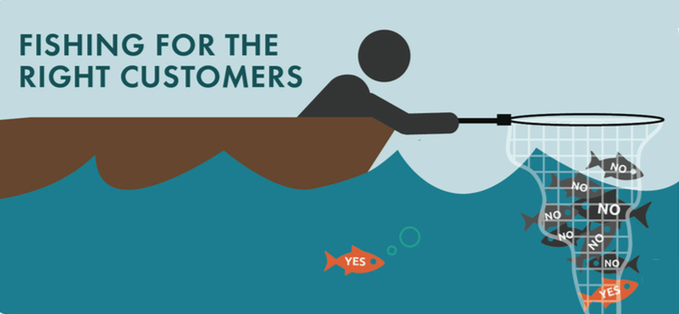

How To Identify Target Accounts For ABM in APAC


Account-based Marketing (or ABM), as we’ve defined in our previous blogs, refers to a type of marketing strategy that focuses on converting your highest propensity segments.
Differing from inbound marketing in that ABM doesn’t engage a wide range of prospects, ABM uses rather a more “personalised, dedicated, and account-specific” approach towards targeting key decision makers, or those with the power and authority to purchase a product or service.
Don’t get us wrong, though: Inbound still is a powerful marketing strategy to boost your B2B business, especially when you’re targeting small to midsize enterprises. But when stakes are high (read: when you’re targeting Fortune 500 companies), it becomes more prudent to turn to ABM where your marketing efforts can have a maximum impact.
Breaking the sales-marketing divide
In doing your account targeting strategy, it’s important to align first your sales and marketing teams on how they can perform effective coordination of their resources. Aside from the fact that this can generate 209% stronger contribution to revenue from marketing-generated leads, sales and marketing alignment provides an opportunity for both to establish shared performance goals and optimise your lead conversion process.
Read: How to Save B2B Email Marketing from The Great Sales-Marketing Divide
The first step towards getting your sales and marketing teams to work together is to agree which high-value accounts you need to prioritise.
For the ABM scenario, this entails multi-pronged efforts such as identifying traits that best characterise your ideal customers, digging deep into your internal data to review your customer transaction history, and developing a lead scoring that can help you tell which among your clients needs further nurturing. (More on this later.)
By using a targeted list, your team can be freed from the tedious work of grinding through marketing qualified leads (MQLs) and instead focus on delivering services or products that improve your win rates.
The second step is for the team to find ways to trim down this list further. Remember that when it comes to ABM, starting small is well and fine. So focus on surfacing your highest priority accounts. This pilot effort will help you later build your target list, as well as control your costs as your campaign progresses.
The third is to craft your sales account target template.
What is a sales account target template?
A sales account target template, ideally developed by sales and marketing teams together, is a document that allows you to visualise your ABM outcomes. It follows the funnel framework and details your metrics, expectations, and prospecting activities at each stage of the funnel.
How can this template drive your ABM goals?
When you have a sales account target template, measuring your ABM success is a lot easier. It allows you to align your goals—from getting qualified accounts to keeping your offerings top of mind—with success measures and how these can be achieved through the right personalisation techniques.
Targeting the right accounts with the right data
To select the right accounts to target, data will be your most trusted ally. And how can it be not? When you’re doing ABM, you’re also moving away from a spray and pray strategy towards a more account-oriented approach to prospecting. To ensure your ABM success, therefore, you need to consider the following data:
Firmographics
Firmographics refers to types of information that can be used to classify organisations relevant to your business. Information collected often include company size, products sold, customers served, number of employees, revenues, location, and stage in the sale cycle.
As B2B sales or marketing executive, knowing these information will allow you to spend less sales calories on leads that aren’t going to close and devote your resources instead towards those with higher propensity to.
Take note however that your firmographic list doesn’t have to be too exhaustive to start, especially if you’re gunning only for a “proof of concept” campaign that seeks only a small portion of your addressable audience. What you need to keep in mind is why you’re including specific information in your list and how it can help improve your ABM outcomes.
Technographics
When we talk about technographics, we’re talking about a company’s tech rack and other digital platforms it is willing to invest in in the future. Identifying technographics can give us insights into a company’s technology standing, which we can then use to perform opportunistic outreach.
When was a particular technology purchased? How long has it been in use? Which solutions can pair well with what’s currently used? Which software solutions are not being considered at the moment? All of these can be used by sales and marketing executives to build their ABM strategy and develop a targeted messaging.
Intent data
In creating a tiered set of target accounts, you’ll need a solution that can give you full picture of your prospects’ engagement with your brand. Are certain people within your target accounts activelyresearching about your company offering? Or are they already showing signs of any buying signal?
The reasoning behind intent monitoring is that when a number of people within your target account is spending hours on your website, consuming pages of content, and downloading relevant white papers, an active buying opportunity is likely in the offing.
Engagement data
The measure of your prospects’ engagement with your brand is the bread and butter of ABM. Much like intent data, engagement aggregates activities from all people who are interacting with your business and clues you in on where they possibly are in the sales funnel.To measure engagement, specific softwares are using programmed algorithms to track set engagement behaviours such as open rates, CTRs, and time spent on content. Unsubscribe, a potential sign of a disengaged behaviour, is also usually monitored to better identify engagement scores. 
Welcome, ABM!
For a high-growth yet under-resourced region such as the Asia and the Pacific, account targeting strategy offers opportunities for B2B businesses to upskill their sales and marketing teams and capture high value accounts that can help sustain growth momentum in the region.
Using the four data sources mentioned, companies can develop narrowcast programmes to reach influencers of leading APAC industries such as those engaged in e-commerce, medical technology, and energy generation, and drive business results that are data inspired and collaboration-led.
ABM, the new kid on the block, is definitely making heads turn today. It's time to get to know ABM better. Download now a copy of our free guide today.
Image Credits and Sources:
Header image from Pixabay
lllustration courtesy of Terminus
More insights
